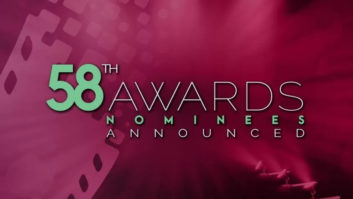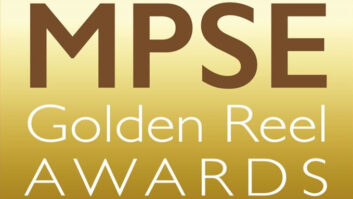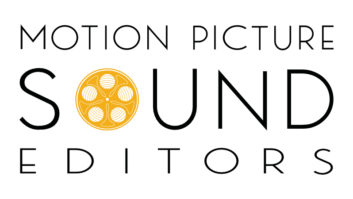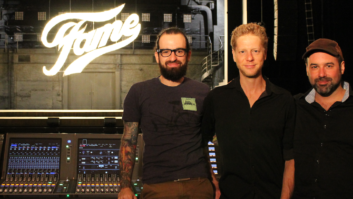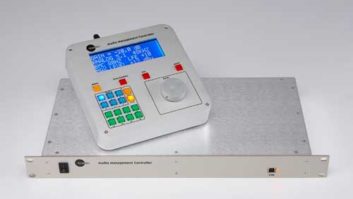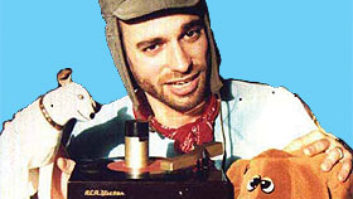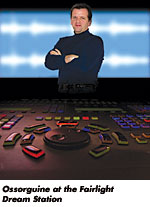
Peter the Great, if you believe in the hereafter, is out theresomewhere smiling down on Serge Ossorguine. A first-generation Americanand the owner of Serge Audio, a Manhattan-based post facility he openedseveral years ago, Ossorguine’s lineage traces directly back to theRussian emperor.
Early in the last century, Ossorguine’s grandfather was a wealthylandowner and the governor of a Russian province. During the 1917Revolution, his family was dispossessed of property, and his parentslater emigrated to the United States, settling in the riverside villageof Nyack, N.Y.
The home of artists, composers and writers for many years (WilliamStyron wrote Sophie’s Choice while living there), Nyack wasOssorguine’s home throughout high school, where he played guitar andice hockey before graduating in 1975. After a few semesters at thelocal community college, he attended the University of Wisconsin, wherehe majored in theater and took a minor in electronic music, whichproved instrumental in his career as a theatrical sound designer andlater as a sound designer for commercial post applications.
“I studied electronic music with Dave Harris and met Butch Vigat Wisconsin,” says Ossorguine. “I was a pretty goodmusician, but I really loved sound design,” he says. “Aftercollege, I went through a period where I felt that designing sound fortheater was the right place to be.”
In the early 1980s, it was one of the only places where consistentsound design work could be found in New York. Eventually, Ossorguineended up at the Yale Repertory Theater working as an interpreter for aRussian director who was hired to direct a production there. In 1981,he applied to the technical design and production division of Yale andentered a three-year post-graduate program in sound.
The lure of the theater, coupled with that of California, ledOssorguine to head west and become the sound designer to thewell-regarded regional theater company, South Coast Repertory.Eventually, he returned to New York, where he mixed live theater andcreated sound design on Broadway.
Some of Ossorguine’s fondest theater memories come from working on80 Days, a musical based on Around the World In 80 Daysthat featured songs written by Ray Davies. “That show wasdirected by Des Macanuff, who ended up directing Tommy onBroadway,” Ossorguine recalls. “We had an orchestra ofabout 14 players and about the same number of wireless mics. I had tokeep track of this mix and have my sampler ready, because there was onemoment in the show set in a gale storm out in the middle of the PacificOcean and I had to trigger a thunder clap at just the right moment. Onenight, just as I was about to reach for the key, someone grabbed my armand hit it instead of me…Ray!
“I always wished that I’d captured him one day during therehearsal phase of that show,” he continues. “With just aguitar, Ray played through all of his songs to the cast, and it soundedgreat. But we didn’t have a DAT machine on hand and the moment wasgone.” Not lost, however, is the relationship Ossorguine formedwith the actress who played Mrs. Verne, who is currently his wife andthe mother of their two children.
“After 80 Days, I continued to get theater jobs,especially Off Broadway work,” he adds. “Those jobs werevery important to my later work in audio post because I got toexperiment a lot and extend my sound palette.” Making asuccessful business out of theatrical sound design work involves luck,timing and a business sense, says Ossorguine. “I went out on theroad a lot and enjoyed the time I spent, but you can’t make a long-termliving out of that work. I was on tour with the first road company ofInto the Woods and learned a lot about mixing. MichaelStarobin’s orchestrations were great, and I had to sweat to bring outall the nuances of them. We’d arrive in a new city with half-a-semifull of gear and I’d have 20 minutes to tune the room and learn thecapabilities of the local crew I’d be working with. That part of theexperience was great.
“But the way to make money in theatrical design work is tohook up with a show or shows that are going to last a while. The waythe business works is that the sound designer gets a fee for creatingall of the sound systems and recording field sounds if that’snecessary. For a short period of time, you’re communications central.When your work’s done and the show’s in production, you receive aweekly royalty payment. If you’re lucky enough to have several showsrunning at the same time, you can make some good money.”
By the early 1990s, Ossorguine started a family and was looking forstable work that would keep him at home in New York. “I beganlooking for television work and got a job at ABC posting soaps,”he says. “I worked on All My Children and One Life toLive, and then 20/20, Prime Time Live and a lot of sportsprograms.”
In 1994, Ossorguine took a staff position at ABC and joined theSound Effects Artists union. “That was really special because theunion had been organized by Bob Prescott back in the days of TheThree Stooges. Pictures show that Bob had a huge mustache and agreat look. We even used some of the Foley props he created back in thedays when soaps went out live.”
Several years later, ABC was bought by Disney, which led to anopportunity to de-unionize the shop. “It’s really interesting howtechnology became involved in the move to de-unionize,”Ossorguine recalls. “Disney chose Pro Tools as their workstationof choice because it was classified in legal terms as a computeradd-on, not a piece of dedicated audio hardware like a Fairlight. Thislegal distinction meant that they were able to hire non-union operatorsrather than NABET [National Association of Broadcast Employees andTechnicians] people. I think ABC would have preferred to purchaseFairlight systems, but they were constrained from doing so for thisreason.”
Ossorguine left ABC in 2000, though he continued to accept freelanceassignments from time to time. “I knew I didn’t have a future atABC because of the de-unionization issue and for creative reasons. Iwas getting frustrated at what was required of me, which generallyinvolved cutting and pasting library tracks. There was no commitment tocreating an original sound for the network, and I felt that my strengthwas doing original work.”
Before leaving ABC, Ossorguine was awarded a pair of Emmy Awards:one in the sound effects category for his work on All MyChildren, and a second for co-mixing an episode of Prime TimeLive.
Although he amassed equipment of his own for years, Ossorguine madea major decision before opening Serge Audio to the public. Well-awarethat Pro Tools is the workstation of choice for many audio postprofessionals, he went in another direction — purchasing aFairlight Dream Station.
“I find that the Dream Station is less mouse- andscreen-intensive than Pro Tools, and it’s a much faster system,”he explains. “I’m not knocking Pro Tools. There are things I missabout it, particularly the way it lets you drag and push things around,but if you don’t grab and place things correctly, there are syncproblems, whereas there are safeguards built into the Dream Stationthat keep time in place.
“I also prefer the control surface of the Dream Station overPro Control — the throw of the faders is much more natural. Inall fairness, I haven’t mixed on the new Pro 24 and I’ve heard thatit’s better than the Pro Control.
“At the end of the day, there’s one aspect of working in theDream Station that offers the most critical advantage for me and that’sfile management. I had been using a Sonic Solutions workstation at ABC,which let me copy and paste from regions of an EDL. I’d open two EDLs:one from the show and one from Sonic Solutions. It was easy to movebetween sessions and copy files, stings for example, that wereidentical in two different programs. The Dream Station is very adept atthis task. It feels very much like a musical instrument. As you’reauditioning a voice-over, for example, you can cut and paste itsomewhere else on the fly. While scrolling through a waveform, you cancut from a particular point during playback and it will play from thenew location. In other words, you can perform edits live, and I likethat a lot. The heart of the matter is that the Fairlight has a verysolid audio engine.”
Serge Audio, located on Fifth Avenue, is intimately connected withthe production and post facility Nitrous. “I formed arelationship with Nitrous when I was at ABC,” Ossorguine says.“I got to know and like the work of their video editors, and whenI decided to go out on my own, it seemed logical to hook up withthem.
“Nitrous and Serge Audio are networked,” he continues.“If we’re working on a show together, they’ll put an OMF file onthe network. When my work is complete, I either play back to Digi Betaor bounce to a stereo pair on my Fairlight. Then I’ll drop this stereoaudio file onto the server for them to pick up and incorporate into thefinal mix.”
These are precarious times for the post industry, but Serge Audio ishandling the choppy water well. Recent projects include a package ofABC sports programs, mixing a documentary on Neil Diamond and a varietyof industrial and corporate assignments.
